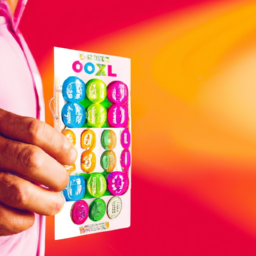Driving Engagement with Gamified Marketing: Discuss how gamification can drive customer engagement in marketing.
Gamified marketing has taken the marketing world by storm in recent years, and for good reason. It offers a fun and interactive way for businesses to engage their customers, capture their attention, and drive meaningful interactions with their brand.
What is gamified marketing?
Gamified marketing is the practice of using game-like elements, such as challenges, rewards, and competition, to engage and motivate customers to take specific actions. These actions can include anything from making a purchase to sharing content on social media or signing up for a newsletter.
By incorporating game mechanics into marketing campaigns, businesses can tap into our natural human desires for competition, achievement, and rewards. This creates a more engaging and enjoyable experience for customers, leading to increased brand loyalty, customer satisfaction, and ultimately, improved business outcomes.
How does gamification drive customer engagement?
1. Creates a sense of fun and excitement: Gamified marketing adds an element of fun and excitement to the customer experience. By turning everyday activities into entertaining challenges and offering rewards for completing them, businesses can make their brand more memorable and enjoyable for customers.
2. Boosts motivation and participation: Gamification taps into our innate desire for achievement and recognition. By setting goals, offering rewards, and creating friendly competition, businesses can motivate customers to actively participate in their marketing campaigns, whether it’s by making a purchase or sharing content.
3. Enhances brand loyalty: When customers have a positive and enjoyable experience with a brand, they are more likely to develop a sense of loyalty and affinity towards that brand. Gamified marketing can help foster this loyalty by creating a unique and memorable experience that sets a business apart from its competitors.
4. Drives social sharing: Gamified marketing campaigns often encourage customers to share their achievements or progress on social media platforms. This not only increases brand visibility but also generates social proof and word-of-mouth marketing, as people tend to trust recommendations from friends and family.
5. Generates valuable customer data: Gamified marketing allows businesses to collect valuable data about their customers’ preferences, behaviors, and engagement level. This data can then be used to personalize marketing messages, improve customer targeting, and optimize future campaigns.
Examples of gamified marketing campaigns
1. Starbucks Rewards: Starbucks uses a gamified loyalty program where customers earn stars for each purchase. These stars can be used to unlock different levels, receive personalized offers, and gain access to exclusive benefits.
2. Nike Run Club: Nike’s running app incorporates gamification by offering achievements, challenges, and leaderboards to motivate runners to achieve their fitness goals and compete with friends.
3. Duolingo: The language-learning app uses gamified elements such as leveling up, earning virtual currency, and competing against friends to make the learning process more engaging and enjoyable.
4. McDonald’s Monopoly: This annual promotion by McDonald’s turns the act of buying a meal into a game, offering customers the chance to win prizes by collecting game pieces.
Conclusion
Gamified marketing is a powerful tool for driving customer engagement in marketing. By leveraging game-like elements, businesses can create a more enjoyable and interactive experience for their customers, leading to increased brand loyalty, participation, and ultimately, improved business outcomes. So, if you’re looking to spice up your marketing campaigns and stand out from the competition, why not give gamification a try?


